Nudge Marketing: How Does it Work for Ecommerce & Examples for 2024
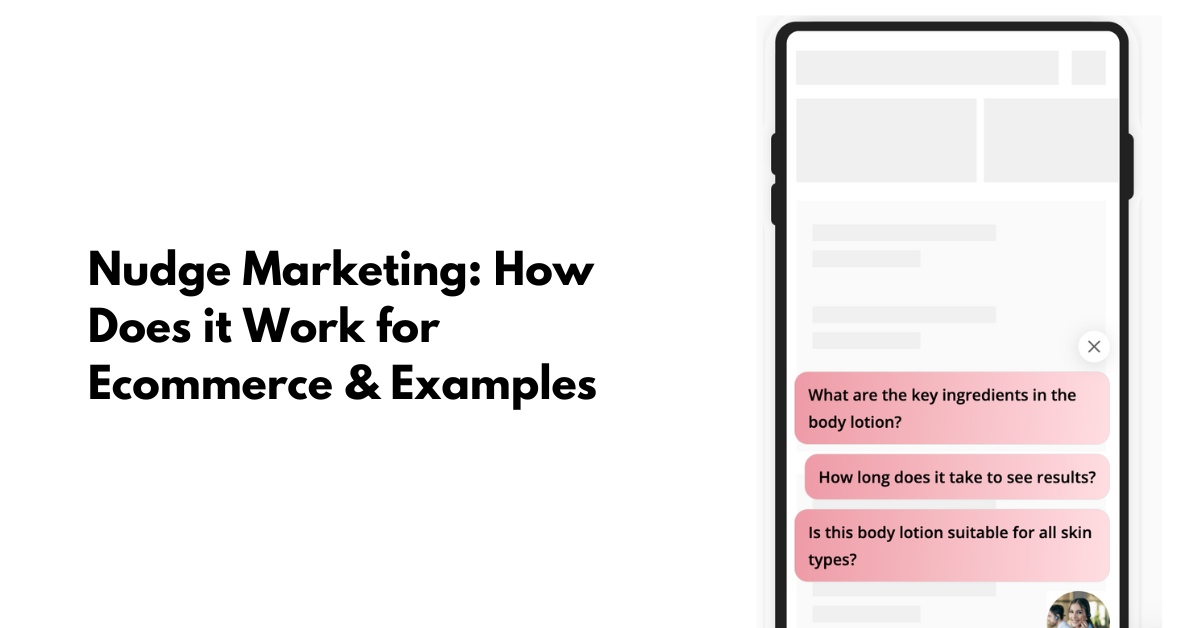
Nudge marketing has become a pivotal strategy for ecommerce businesses in 2024, subtly guiding customer decisions without overwhelming them. This approach capitalizes on subtle prompts and cues that align with natural human behavior and decision-making processes. For online retailers, this means integrating elements that can gently influence customer actions, such as simplifying checkout processes or highlighting popular products.
These tactics are grounded in behavioral economics and have been shown to effectively boost conversions and enhance customer engagement by making the shopping experience intuitive and user-friendly.
What is Nudge Marketing?
Nudge marketing is a technique used in ecommerce to subtly influence the behavior of shoppers through cues and design elements that make certain choices more appealing or easier to execute. This strategy involves making small adjustments to the shopping environment or process that can lead to significant changes in consumer behavior. For instance, an online store might highlight its best-selling products as "most popular" or provide a default option for eco-friendly packaging at checkout.
These nudges help guide customers towards making decisions that both align with their interests and benefit the business, such as increasing sales, improving customer satisfaction, or promoting sustainable choices, without overt persuasion or coercion.
How Does Nudge Marketing Work?
Nudge marketing is a strategy that subtly steers customers towards certain behaviors or decisions by playing on basic human instincts and biases. It's particularly effective in online retail settings because it can gently guide shoppers without being overtly persuasive or forceful. Here’s how it typically works:
- Defaults: Setting default options can significantly influence customer choices. For example, pre-selecting eco-friendly shipping options can encourage more sustainable purchasing behaviors without requiring shoppers to explicitly choose them.
- Social Proof: Highlighting popular choices or displaying customer testimonials provides social validation, which can reassure potential buyers about the quality and popularity of a product. For instance, showing messages like “Most popular choice” or “Bought by 100+ people this week” near items can increase their attractiveness.
- Scarcity and Urgency: Indicating limited availability or a limited-time offer can create a sense of urgency and scarcity, compelling shoppers to act quickly to avoid missing out. Messages such as “Only 3 left in stock” or “Sale ends tomorrow” are common examples.
- Simplification: Making the process easier, such as a simplified checkout, fewer form fields, or clear navigation cues, can nudge shoppers towards completing a purchase. People tend to favor the path of least resistance, so reducing complexity can lead to higher conversion rates.
- Anchoring: This involves setting a reference point for shoppers, such as showing a higher “original” price next to a discounted price to emphasize the deal they are getting. This contrast can make the current price seem more appealing.
- Reciprocity: Offering something small for free (like a sample or a low-cost add-on) can invoke the principle of reciprocity—customers feel obliged to respond in kind by making a purchase.
Why Does Nudge Marketing Work?
Nudge response marketing works because it taps into subtle psychological triggers that influence consumer behavior. Here’s why it's particularly effective in online shopping:
- Enhances Decision-Making: Online shoppers are often overwhelmed by choices. Nudge marketing simplifies these choices by highlighting products through tactics like ‘best seller’ badges or ‘most reviewed’ labels. This helps consumers make decisions more quickly and confidently without feeling the strain of analysis paralysis.
- Encourages Impulse Buying: By presenting timely prompts or limited-time offers, nudge marketing capitalizes on the human tendency to act on impulse. For instance, a countdown timer for a deal expiration can create a sense of urgency that encourages shoppers to buy on the spot.
- Leverages Social Proof: Humans naturally look to others for guidance. Nudging marketing uses this to its advantage by incorporating elements like customer testimonials or the number of items sold. Seeing that others have made a purchase can reassure a potential buyer and nudge them towards a purchase.
- Personalization: This strategy involves customizing messages that resonate more deeply with individuals. For example, showing a returning visitor items related to their previous purchases can remind them of what they were interested in and nudge them towards adding those items to their cart.
- Optimizes for Convenience: By making processes smoother, like an easy checkout system or visible add-to-cart buttons, nudge marketing plays on the human preference for ease and convenience. This can greatly increase the likelihood of completing a purchase.
How to do Nudge marketing with the help of AI?

Nudge marketing, particularly when enhanced by AI technologies like those offered by Manifest AI, can significantly boost the effectiveness of your ecommerce strategies. Here's how you can implement AI-driven nudge marketing with the help of Manifest AI:
- Understanding AI Nudges: Manifest AI utilizes advanced machine learning algorithms to analyze customer behavior and preferences. This AI system can predict optimal moments to present nudges that encourage users to take desirable actions.
- Customization and Personalization: With Manifest AI, you can customize nudges based on specific customer segments. For example, if data shows that a customer frequently browses a certain category but hesitates to purchase, the AI can trigger personalized nudges related to that category, such as highlighting limited-time offers or showing what others have bought.
- Optimization of Offers: The AI analyzes past interactions and adjusts the timing and content of nudges to increase their effectiveness. For instance, it might determine that certain customers respond better to nudges in the evening or when they have been inactive for a specific timeframe.
- Seamless Integration: Manifest AI integrates smoothly with your existing ecommerce platform. This integration allows for real-time data processing and nudge implementation without disrupting the user experience or requiring significant changes to the website infrastructure.
- Feedback Loop: One of the key advantages of using AI like Manifest AI is its ability to learn from outcomes. It continually refines its algorithms based on which nudges are most successful, adapting to new data and evolving consumer behaviors.
- Diverse Nudge Types: Manifest AI supports various types of nudges, including popup messages, personalized banners, and checkout reminders. Each of these can be tailored to the specific customer journey and habits of the user, making the nudges feel more natural and less intrusive.
Nudge Marketing Examples
Here are the most popular and creative nudge examples builded with Manifest AI:
Customer Feedback Nudge
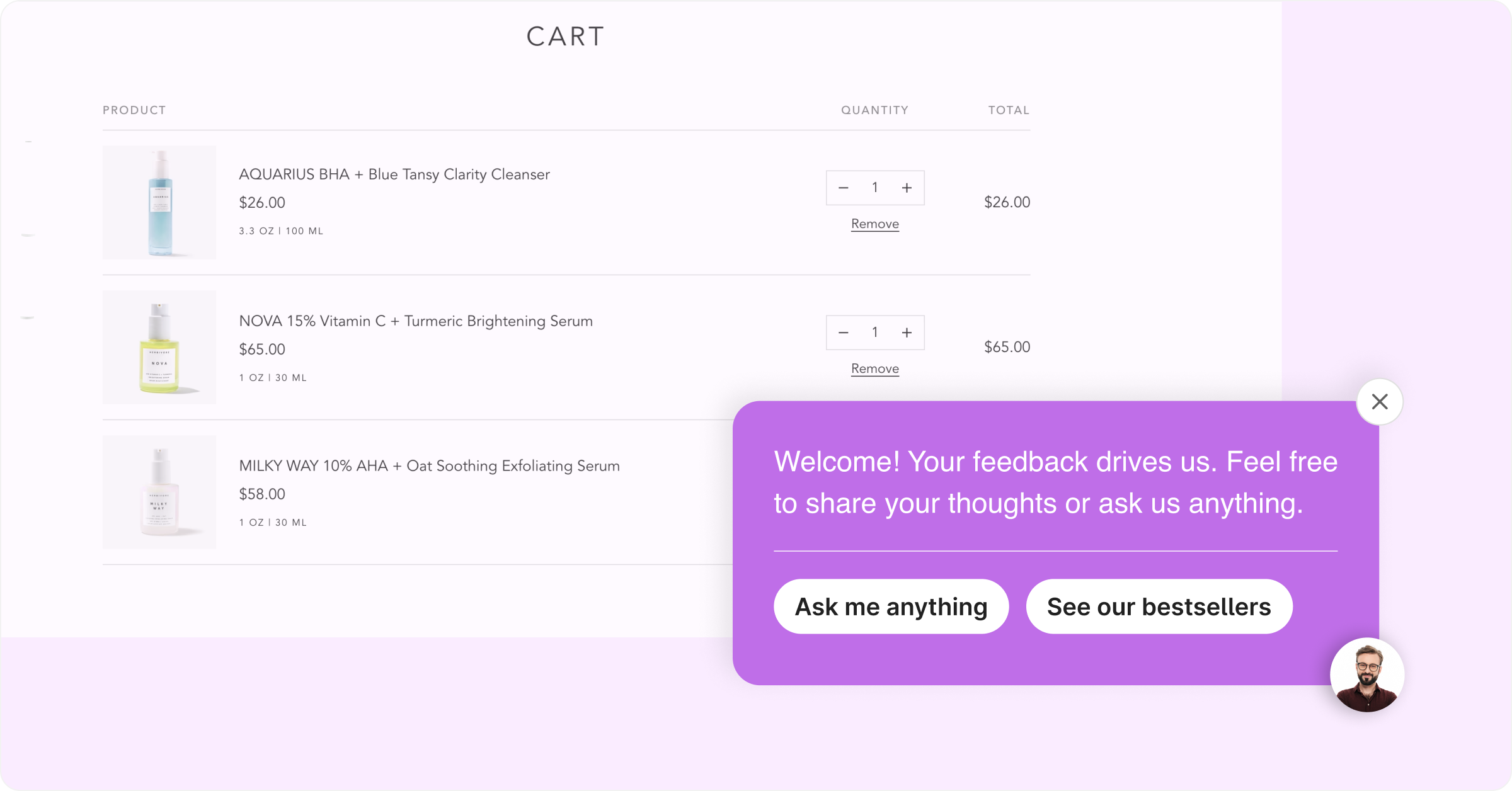
Product Information Nudge
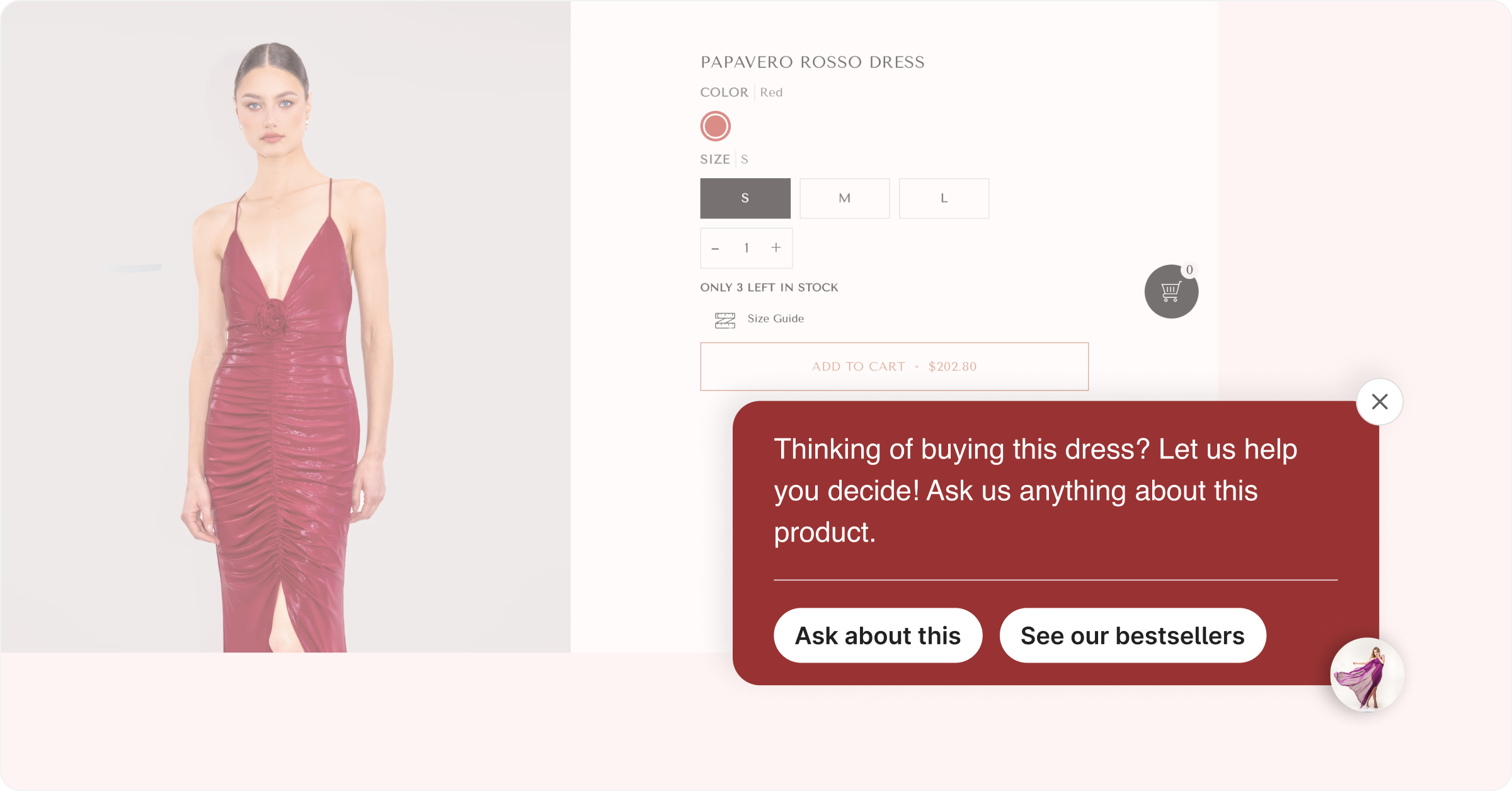
Customer Query Nudge
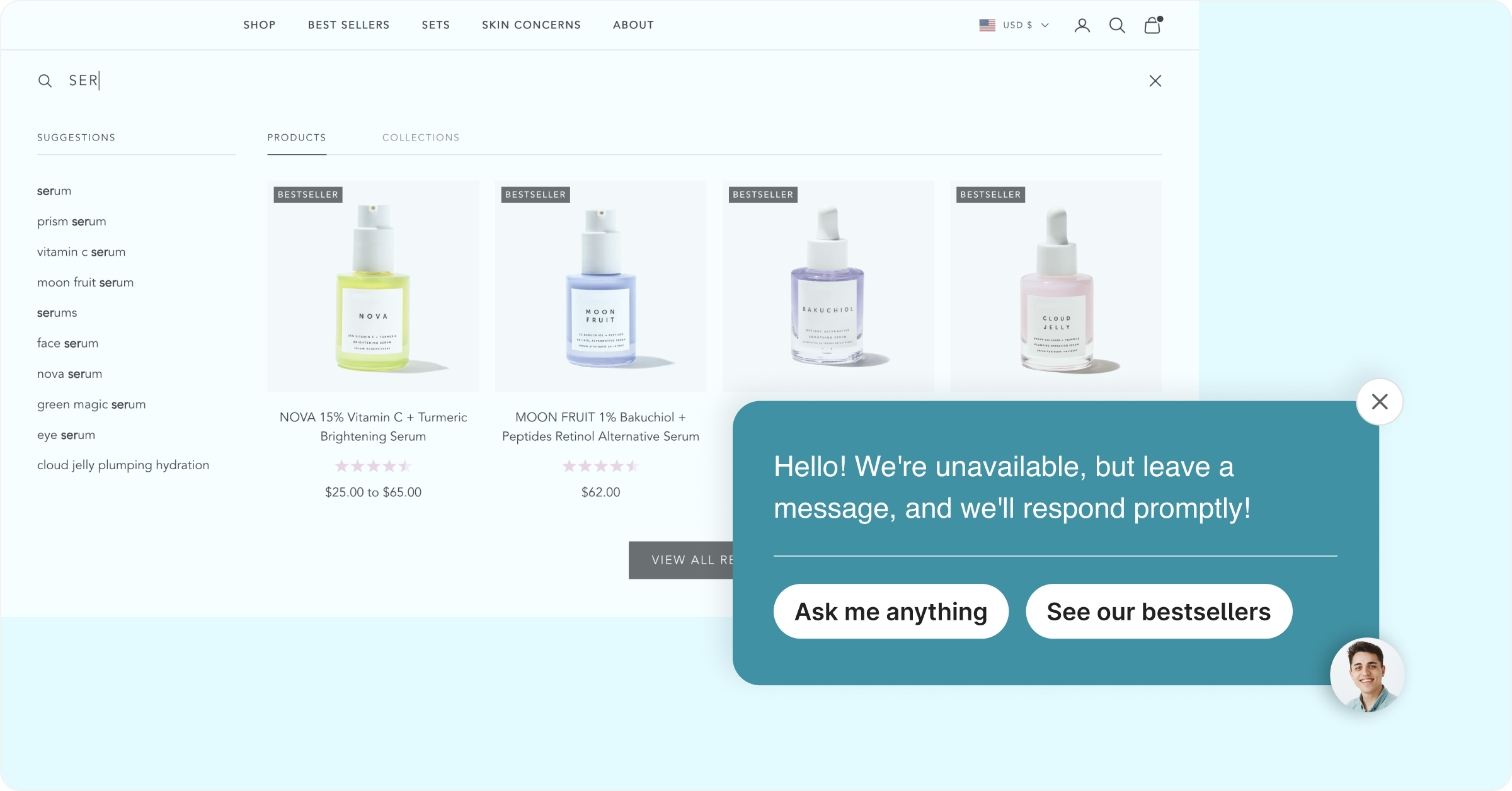
Welcome Nudge

Product Page Nudge
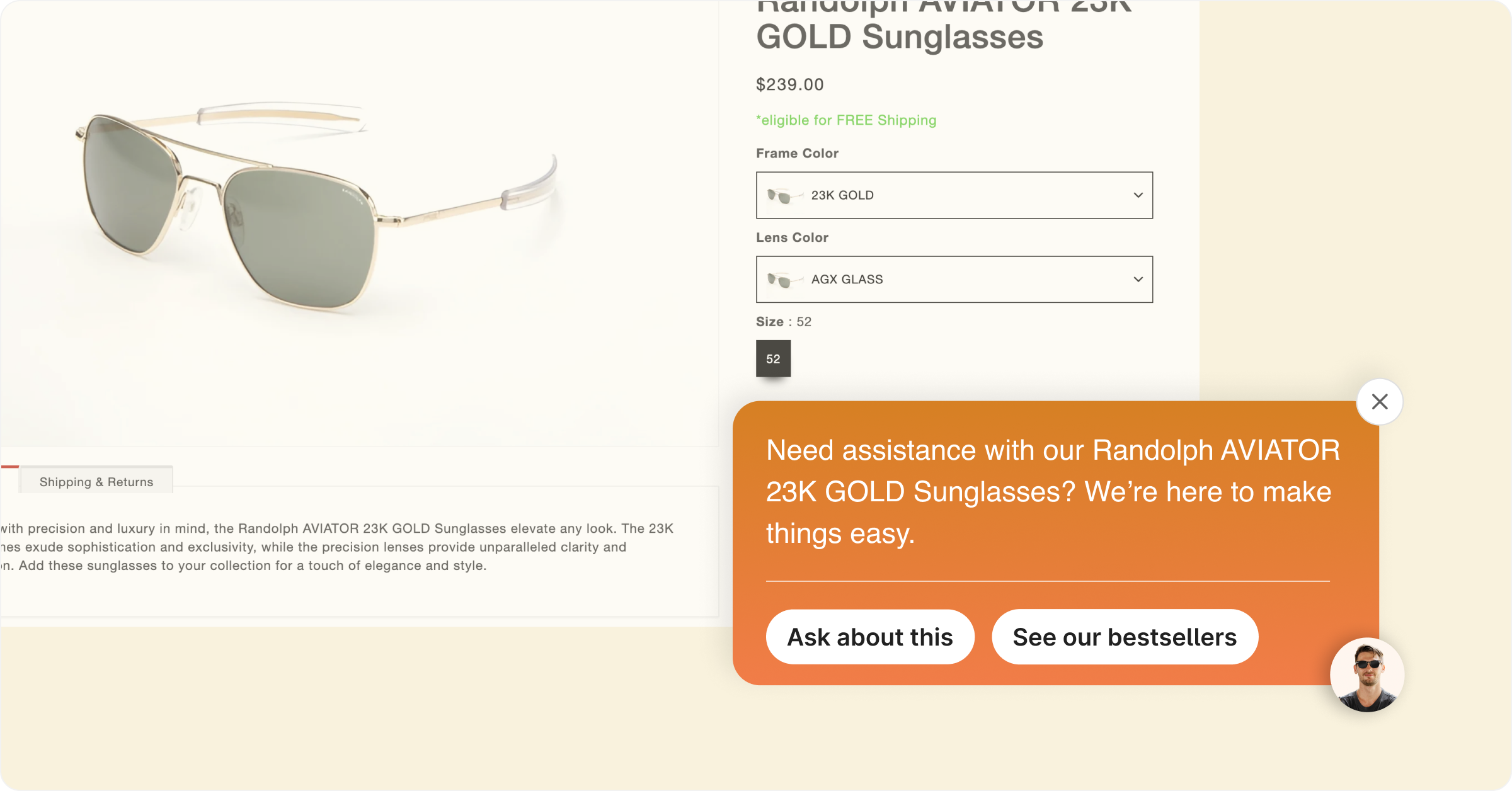
Conclusion
Nudge marketing has emerged as a powerful strategy for ecommerce in 2024, subtly guiding customer behavior to enhance shopping experiences and increase sales. By incorporating small, strategic prompts into the user journey, businesses can significantly impact decision-making processes. With the integration of AI technologies like those offered by Manifest AI, these nudges can be personalized and optimized to meet individual customer needs, ensuring relevance and effectiveness. Such tailored interactions not only boost customer satisfaction but also drive conversion rates, proving nudge marketing to be an essential element of modern ecommerce strategies.

.png)
